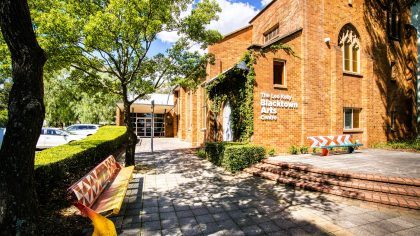
The Leo Kelly Blacktown Arts Centre
An innovative multi-arts hub in the heart of Blacktown City.
Bayadyinyang budyari Dharug yiyura Dharug Ngurra.
Bayady’u budyari Dharug Warunggadgu baranyiin barribugu.
Bayady’u budyari wagulgu yiyuragu Ngurra bimalgu Blacktown City. Flannel flowers dyurali bulbuwul.
Yanmannyang mudayi Dharug Ngurrawa. Walama ngyini budbud dali Dharug Ngurra Dharug yiyura baranyiin barribugu.
We acknowledge the Traditional Custodians of this Land, the Dharug people, and their continued connection to Country.
We pay our respects to Elders from yesterday to tomorrow.
We extend that respect to all Aboriginal and Torres Strait Islander Peoples of Blacktown City where the flannel flowers still grow proud and strong.
We will walk softly on this land and open our hearts to Country as the Dharug people have for tens of thousands of years.
Credit to: Dharug woman Rhiannon Wright, daughter of Leanne ‘Mulgo’ Watson Redpath and granddaughter of Aunty Edna Watson
Artists Jan Cleveringa
Rosalind Stanley
With Dharug design input from Leanne Mulgo Wilson
Windows to Riverstone consisting of four panels tells the story of the rich history of Riverstone as an old farming town in the North West of Blacktown region.
The project was initiated by Blacktown City Council in 2020.
Riverstone Historic Museum, Riverstone Neighbourhood Centre and Riverstone and District Chamber of Commerce were the project partners. They supported the project through providing community knowledge and history, space for workshops opening ways for the artists to engage with the community.
Artists gathered stories through workshops with community members, social media. A questionnaire was distributed by the project partners to the Riverstone residents to gain insight to the history of the area.
In creating the imagery, based on the stories gathered from the community the artists captured the rural feel of Riverstone throughout the murals with a bright blue sky and grassed earth which is common to all 4 murals.
They created a surrealist sense of intrigue using space and shadow, as the frame acts as windows looking into the past. The story is in four sections (due to the dividing nature of the space). Designs are quirky, gentle and original with Dharug imagery and language inviting residents to the country.
The murals designs are a mixture of stories, historical documentation and community input. They draw you in and make you smile and rejoice in the Town’s rich history.
Many images are symbolic representations rather than an accurate historical image.
Extracts from description written by Jan Cleveringa & Rosalind Stanley.
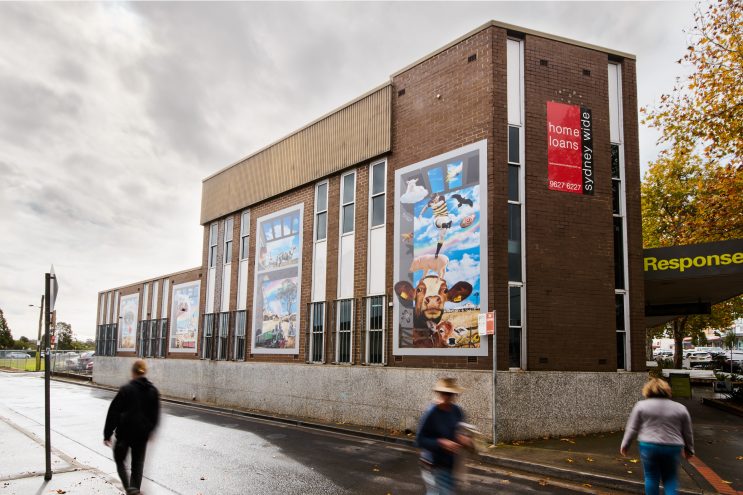
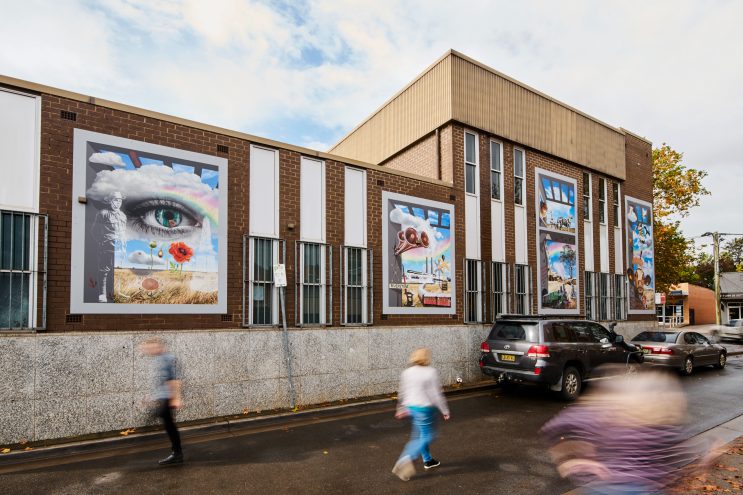
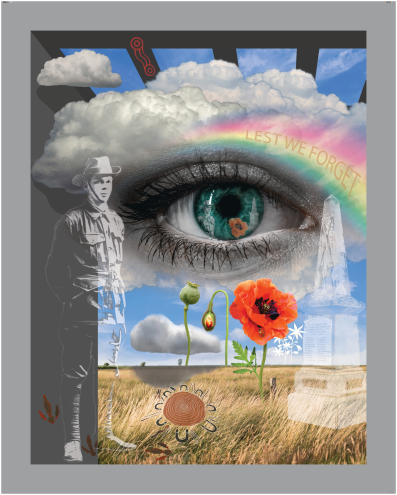
Mural 1
This mural has a prominent eye looking out at you which challenges you to reflect and look back no matter who you are or where you come from. It starts the mural story where an Aboriginal ‘meeting place’ symbol is on the ground below the eye and signifies the first peoples of the land and pays respect to the past, present and future. Emu prints go up the wall. A rainbow connects all the windows.
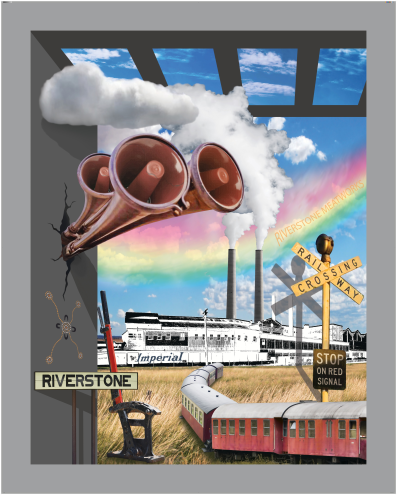
Mural 2
The horns blare from the wall as the Meatworks sirens went off each day, so much so, that people in Riverstone can remember that they could set their schedules to the sound of them- much like a school bell going off each day for lunch time.
Many people still have connections to the Meatworks either through employment, family, community or the past. People have physical, visual, audio and olfactory memories.
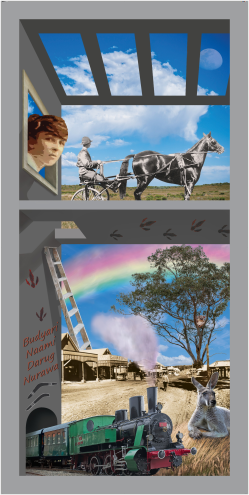
Mural 3
Riverstone railway has always been a significant piece of infrastructure and appears to be a continuing heartbeat of the town as various industries and suburbs grow around it. The green steam engine is a symbol representing so many types of trains and engines that have passed Riverstone over the years. You may notice the invariably loved or hated ‘Red Rattler’ carriages and so on.
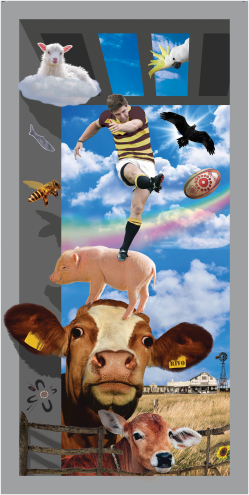
Mural 4
This section of the mural says a ‘quirky and fun hello’ to those who are driving past the lane. Here you will find various livestock, symbolised by animals. You will notice the Olympia Theatre, the local school and the Riverstone Hotel as a context whilst Riverstone changes with more development and diversity.
The Riverstone rugby colours have changed throughout the last 100 years as a player kicks for touch or does a drop kick. The player is a symbolic combination of past and present whilst the ball flies to the viewer.
Read more about the murals here
Jan Cleveringa is a contemporary multidisciplinary artist exploring the impact of global cultural change in society and in particular about how we relate to the environment and sustainability. Jan has been commissioned by Blacktown City Council and other agencies on numerous public art projects for the Blacktown Local Government Area.
Leanne Mulgo Watson is a Dharug artist-educator and is the daughter of Aunty Edna Watson, Dharug Elder for Western Sydney. She has been a director of the Dharug Custodian Aboriginal Corporation for many years. Leanne is a practicing artist/painter, public artist and educator. She has been commissioned by Blacktown City Council on numerous public art projects.
She is the author of Cooee Mittigar her first book.
Rosalind Stanley is a multidisciplinary artist, who creates works that evoke a deep emotive experience in the audience, encapsulating the real and raw nature of human emotions.
This project is presented by Blacktown Arts and supported by Blacktown City Council and the NSW Government through Create NSW.
